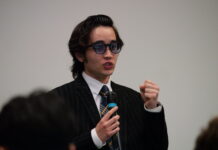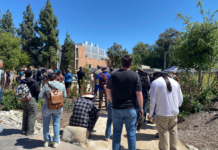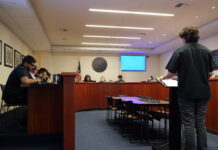
Using Candy to Teach Science
UCR chemist Kerry Hanson and a team of five graduate students visited Taft Elementary school in October, where students were taught the scientific method with a bag of assorted M&Ms.
In a class of third and fourth graders, Hanson and her team incorporated basic scientific research within a new teaching style. The UCR team used M&Ms and the animated film “Frankenweenie” to teach the students the scientific method.
In the film, a young boy concocts an experiment that will resurrect his dog. The students watched the film and observed that electricity brought the dog back to life. The protagonist makes a hypothesis linking his dog’s resurrection to electricity.
The key word in the film was “hypothesis.” After the screening, students dispersed into groups led by Hanson’s team and discussed the scientific process and hypothesis.
The activity consisted estimating the amount of a certain color of M&Ms in a bag. After their hypothesis, students opened the bag and counted each color and compared it to their initial responses.
Hanson’s unique activity allows kids to realize that scientific methods can be found in everyday things in life. Hanson adds that the activity will “help dispense of the fear some students may have of science, and, in effect, lead to some great and innovative science fair projects.”
UC provides grants for HBCU student
To diversify the graduate demographic, UCOP is continuing a grant program initiative for students from historically black colleges and universities (HBCUs). The program, called UC-HBCU, is aimed at strengthening ties with HBCUs in order to attract students and encourage them to pursue a graduate career in the UC system.
Through the program, students are provided with grants to participate in summer research on a UC campus. After selecting from a pool of talent, faculty reach out to those students who would otherwise consider attending a graduate school in the UC system. Various grants include academic research in history, electrical and computer engineering, education and conservation genetics. Faculty have several options for the terms of the grants, such as working with 10 students for several years, or two students for a summer.
Compared to the undergraduate levels across nationwide institutions of higher education, graduate schools are often not as diverse. In the summer of 2012, the program accepted 36 students into seven UC campuses, where HBCU scholars were exposed to diverse research and mentorship opportunities.








